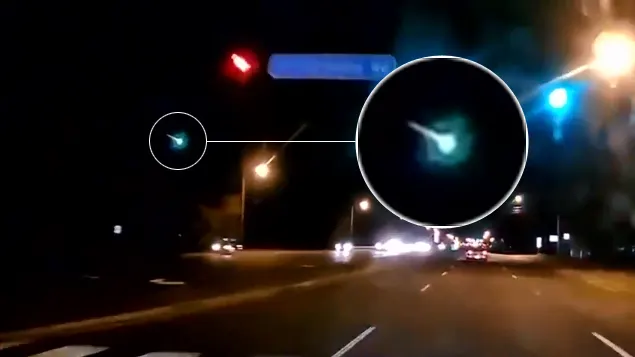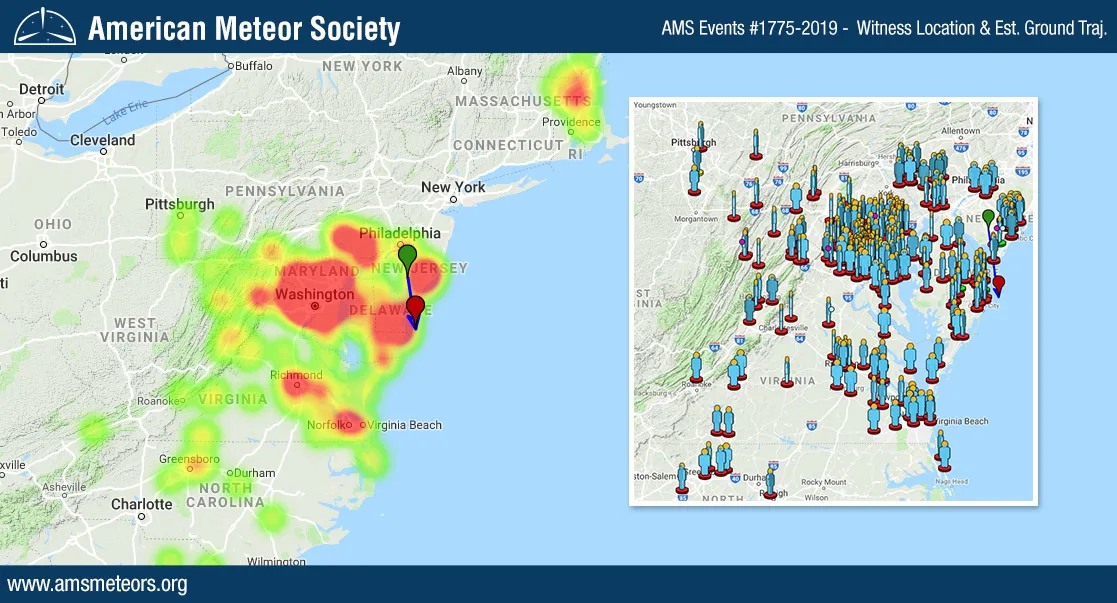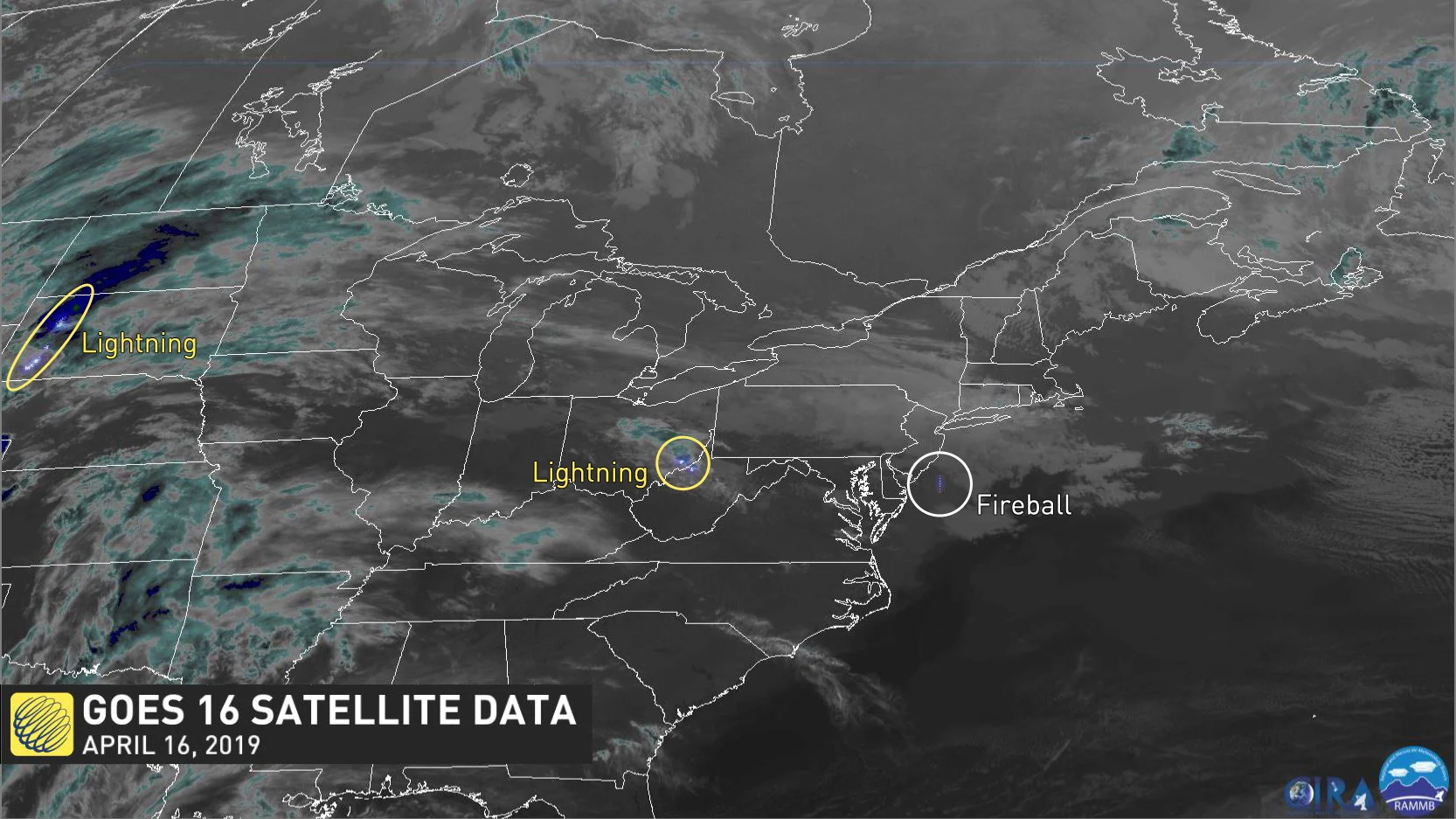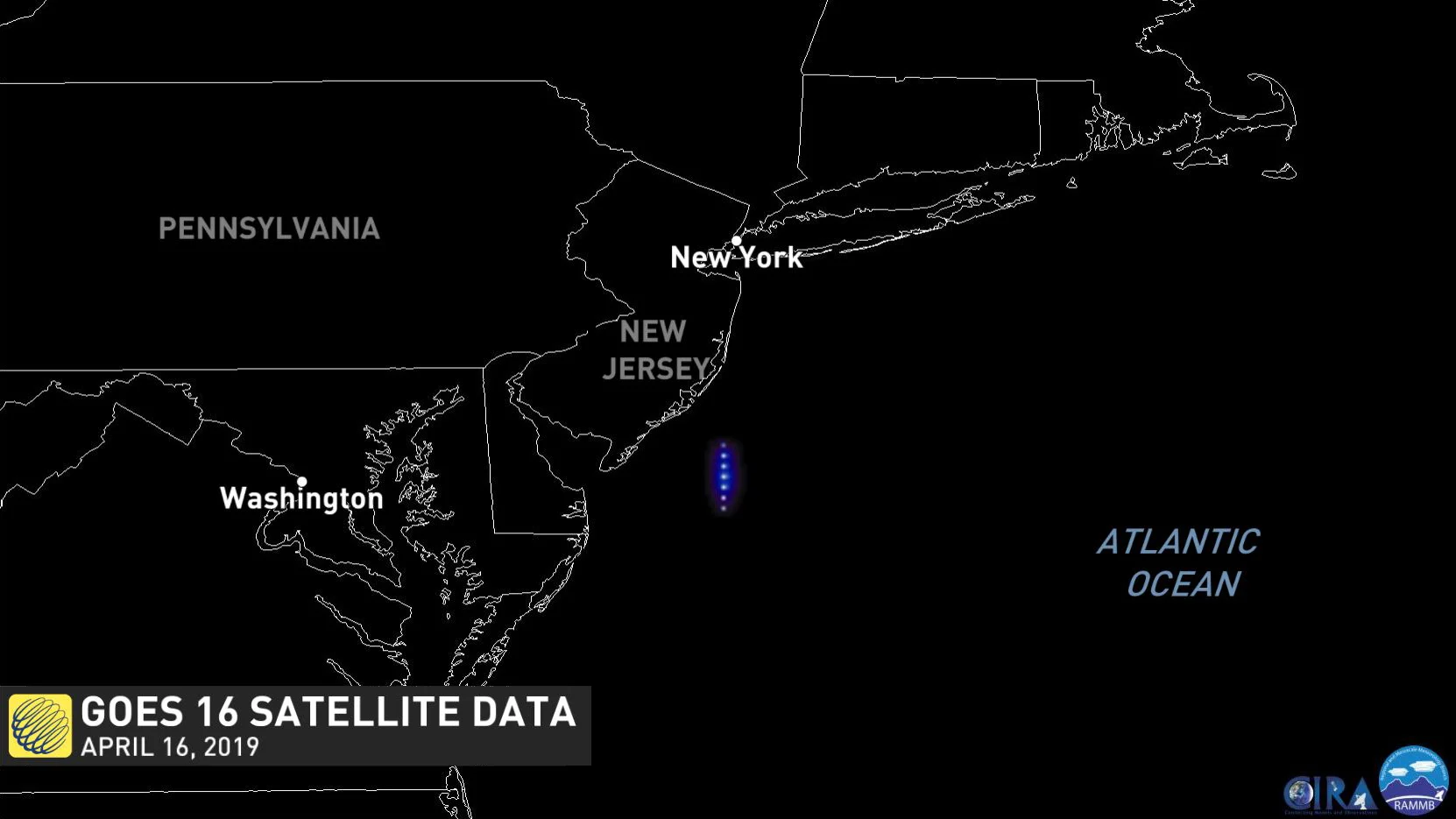
Weather satellite spots bright meteor flash from space
A bright meteor fireball was seen over Washington, DC, Tuesday night, and captured by one extra special observer, in space!
Hundreds of reports flooded the American Meteor Society's website on Tuesday night, after a brilliant fireball flashed across the sky over Washington, DC.
This meteor, which was spotted around 11 p.m. EDT, was reported from as far north as Boston, and as far south as the Carolinas, and lasted for a full 8 seconds.

AMS heat map of fireball reports for this event. The blue arrow is the fireball trajectory, determined by the eyewitness reports. The inset map shows the locations of the viewers. Credit: American Meteor Society
Given that the meteoroid that caused this flash was likely over 80 kilometres up at the time, it would have been visible well inland, as well.
Watch the fireball blaze across the sky in this dashcam video from Steve Chazin.
Not only was this meteor spotted from the ground, but it was also seen from space!
The GOES-16 weather satellite, which keeps a constant vigil over the western hemisphere from geostationary orbit, roughly 36,000 km out into space, has a special sensor on it, known as the Geostationary Lightning Mapper, or GLM. The GLM records any bright flashes, usually from lightning, and sends that data down to Earth, so meteorologists can track severe weather.
The sensor does not differentiate between different flashes of light, however. Regardless of what caused the flash of light, if it picks something up, it sends its report.
On Tuesday night, it picked up the bright flash from this meteor.


Meteors flash through the skies on Earth quite often.
They are caused by meteoroids, which are pieces of rock or ice, left over from the origin of our solar system. These meteoroids are typically travelling at tens of thousands of kilometres per hour when they plunge into Earth's atmosphere. When this happens, the air in the meteoroid's path is compressed so much that it glows, brightly. How bright, and for how long, depends on the speed of the meteoroid, and how large it is.
These can happen randomly, on their own, or as part of a meteor shower. Meteor showers are annual displays of bright flashes, very easily predicted, and often associated with a known object in space, such as a comet or asteroid.
The next annual meteor shower is the Lyrid Meteor Shower, which peaks on the night of April 22-23.
Fireballs are meteors that shine so bright that they match or exceed the brightness of the planet Venus - the brightest planet in our night sky.
Fireball meteoroids are often large enough for at least a piece of the original object to survive its passage through the atmosphere. When these fall to the ground, they are called meteorites.
While the trajectory from the American Meteor Society reports places the fireball mainly over land, the GOES-16 view shows that it was actually over the ocean when it burned up. If any pieces of this meteoroid did survive, they are likely at the bottom of the ocean now.
Sources: AMS | NOAA/CIMSS/SSEC/University of Wisconsin






